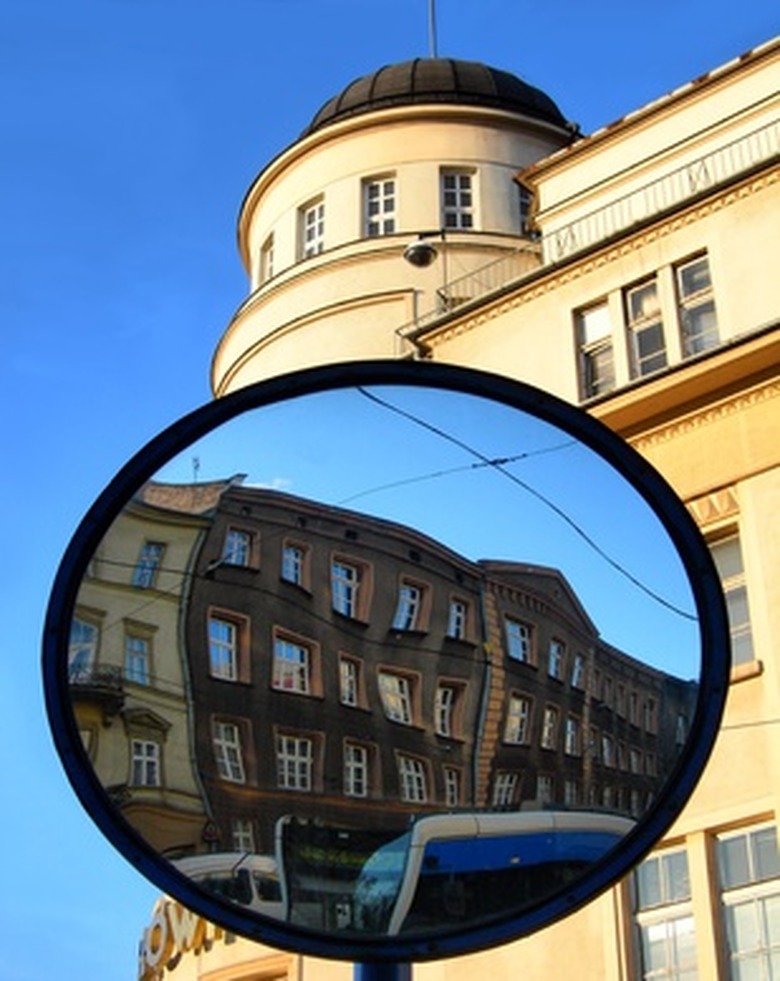Advantages & Disadvantages Of Convex Mirrors
Convex mirrors have a variety of uses today—many of which are for security purposes, as well as to help drivers on the road. These mirrors offer several distinct advantages, as well as disadvantages.
View
View
Convex mirrors make objects seem to appear smaller than they are in reality, which allows for a wider viewpoint in a smaller space.
Distortion
Distortion
Convex mirrors reflect images in a distorted shape due to their convex shape. It can be difficult to determine the actual placement of objects.
Location
Location
Convex mirrors can be placed indoors or outdoors in most forms of weather since they are very durable.
Maintenance
Maintenance
Unlike surveillance cameras, convex mirrors can be on duty 24 hours per day and don't require any maintenance after being installed. The downside is that to be an effective security measure, employees or security officers must be watching the mirror at the time of a theft or security breach.
Misjudgment
Misjudgment
Since versions of convex mirrors are found in many vehicles, driver's misjudgment of speed and miscalculation of distances can be a direct result of the curvature of the mirror within the car.
Cite This Article
MLA
Johnson, Steve. "Advantages & Disadvantages Of Convex Mirrors" sciencing.com, https://www.sciencing.com/advantages-disadvantages-of-convex-mirrors-12743273/. 16 March 2010.
APA
Johnson, Steve. (2010, March 16). Advantages & Disadvantages Of Convex Mirrors. sciencing.com. Retrieved from https://www.sciencing.com/advantages-disadvantages-of-convex-mirrors-12743273/
Chicago
Johnson, Steve. Advantages & Disadvantages Of Convex Mirrors last modified March 24, 2022. https://www.sciencing.com/advantages-disadvantages-of-convex-mirrors-12743273/
